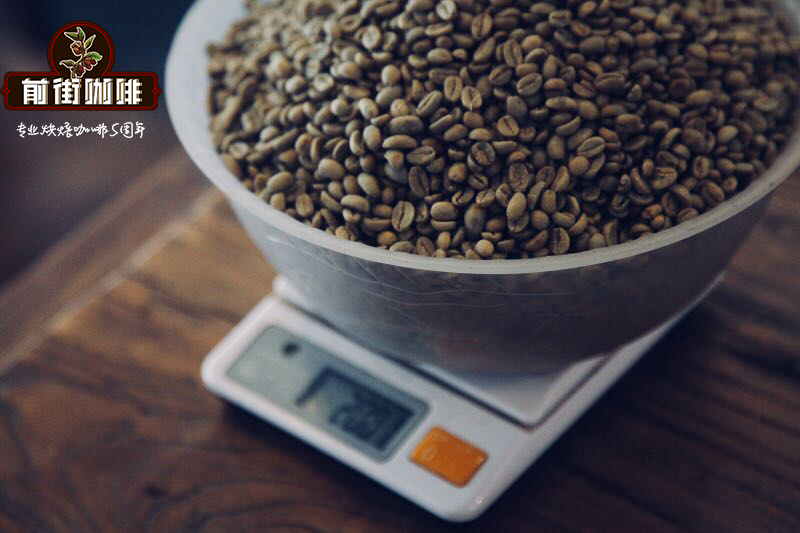What is the farmers' cooperative in Gachasha Gachatha, Kenya?

Professional coffee knowledge exchange more coffee bean information please follow the coffee workshop (Wechat official account cafe_style)
Gachatha is located in the Gakata Farmers' Cooperative, about 150km north of the Kenyan capital Nairobi, adjacent to the town of Otaya in Niye County. Coffee and tea grow here in cadmium orange soil on the slopes of the Aberdale Mountains. Bright green leaves, huge banana leaves, dense jungle dark green, in sharp contrast to bright orange clay, its minerals give coffee depth and nuance.
The Gachatha Farmers' Cooperative supports 1100 farmers, each planting about 200 coffee trees. Farmers from nine surrounding areas send their cherries to the Gachatha factory cleaning station-carefully selected cherries and unique meticulous washing and drying methods make Kenyan coffee look juicy and clean. The nearest source of water is the Kangunu stream, which is recycled for protection. Gachatha transfers 90 per cent of payments to their farmers. By contrast, you will find 80 per cent of the necessary conditions in many places here. Due to changes in local governments over the past few years, the ability to buy coffee directly here is almost impossible. People can only rely on export partners like Dorman to reach impeccably high-quality farmers' cooperatives like Gachatha.
The annual rainfall of Gachatha is 1600-2000 mm. The main crops depend on long periods of rain between March and May, and on short rains received between October and December using trees from Arabica, a variety of SL 28 and SL 34 derived from the admirable Bourbon. AA is the highest grade Kenyan coffee based on bean size and no physical defects. Despite the dissatisfaction of growers, confusing the Government's coffee policy and the city's encroachment on major coffee areas, the renowned Kenyan coffee auction system and its participating cooperatives continue to produce some of the world's most elegant and unique coffee.
Important Notice :
前街咖啡 FrontStreet Coffee has moved to new addredd:
FrontStreet Coffee Address: 315,Donghua East Road,GuangZhou
Tel:020 38364473
- Prev

What's the difference between sun-washed and washed Yejia Xuefei?
What's the difference between sun-washed and washed Yejia Xuefei? Yega's overall flavor description: this is one of the most famous coffee in Ethiopia, with a variety of fruit aromas, honey, tea, a hint of tangerine and lemon, natural fruit sour and sweet, mild and smooth throat, Huiganjia. I feel like I'm drinking afternoon tea. [according to 8 grams of powder
- Next

Costa Rica Shumava Estate Coffee
Professional coffee knowledge exchange More coffee bean information Please pay attention to coffee workshop (Weixin Official Accounts cafe_style) Costa Rica's coffee industry has developed since the middle of the 18th century. It is the first country where coffee is planted in Central America. It has a long history and a complete coffee organization system from production to sales. Costa Rica's coffee has always been recognized by the world in terms of quality and quantity.
Related
- Detailed explanation of Jadeite planting Land in Panamanian Jadeite Manor introduction to the grading system of Jadeite competitive bidding, Red bid, Green bid and Rose Summer
- Story of Coffee planting in Brenka region of Costa Rica Stonehenge Manor anaerobic heavy honey treatment of flavor mouth
- What's on the barrel of Blue Mountain Coffee beans?
- Can American coffee also pull flowers? How to use hot American style to pull out a good-looking pattern?
- Can you make a cold extract with coffee beans? What is the right proportion for cold-extracted coffee formula?
- Indonesian PWN Gold Mandrine Coffee Origin Features Flavor How to Chong? Mandolin coffee is American.
- A brief introduction to the flavor characteristics of Brazilian yellow bourbon coffee beans
- What is the effect of different water quality on the flavor of cold-extracted coffee? What kind of water is best for brewing coffee?
- Why do you think of Rose Summer whenever you mention Panamanian coffee?
- Introduction to the characteristics of authentic blue mountain coffee bean producing areas? What is the CIB Coffee Authority in Jamaica?

